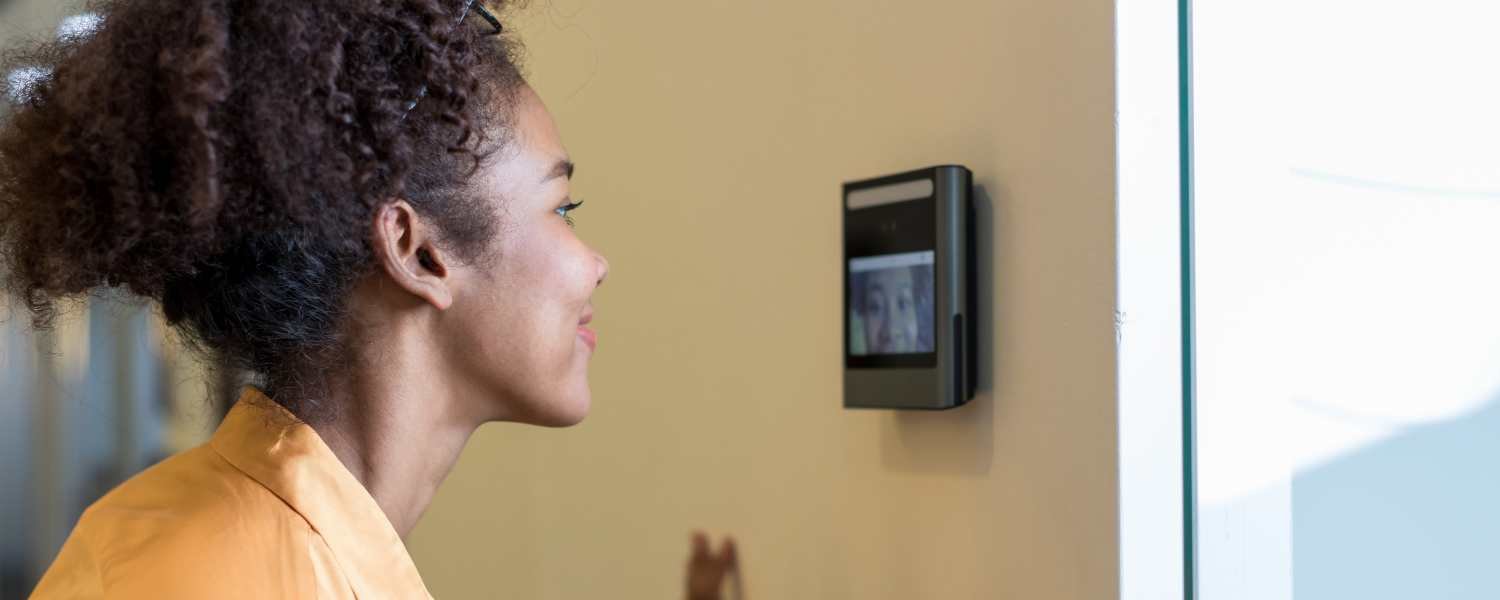The traditional notion of onboarding has undergone a profound transformation. As organisations increasingly embrace remote and hybrid work environments, onboarding has become a pivotal element in ensuring the seamless integration of new employees.
Navigating the intricacies of virtual onboarding requires a nuanced approach beyond conventional practices. In this era of change and adaptation, mastering onboarding best practices for remote and hybrid workforces is not just a strategic imperative but a fundamental necessity for fostering a sense of belonging and productivity among new team members.
New employees entering the workforce today are met with a unique set of challenges. The absence of physical proximity, the reliance on digital communication, and the need to quickly grasp the intricacies of a remote or hybrid setting demand a recalibration of onboarding strategies.
This article delves into the intricacies of effective onboarding, shedding light on the best practices organisations can employ to ensure that the journey of each new employee is not just a process but a transformative experience.
 Implementing a Virtual Welcome Kit is instrumental in creating a positive and informed onboarding experience for remote and hybrid teams. This digital package goes beyond the traditional onboarding materials, encompassing a range of interactive elements designed to engage new hires effectively.
By incorporating onboarding best practices into this virtual guide, companies ensure that essential information about the organisation's mission, values, and workplace culture is conveyed and absorbed by the employees. The Virtual Welcome Kit becomes a digital doorway, providing a structured and accessible introduction to the company's ethos, thus laying a strong foundation for a successful onboarding journey.
Implementing a Virtual Welcome Kit is instrumental in creating a positive and informed onboarding experience for remote and hybrid teams. This digital package goes beyond the traditional onboarding materials, encompassing a range of interactive elements designed to engage new hires effectively.
By incorporating onboarding best practices into this virtual guide, companies ensure that essential information about the organisation's mission, values, and workplace culture is conveyed and absorbed by the employees. The Virtual Welcome Kit becomes a digital doorway, providing a structured and accessible introduction to the company's ethos, thus laying a strong foundation for a successful onboarding journey.
 Digital Onboarding Platforms are pivotal in redefining onboarding best practices for remote and hybrid workforces. These platforms serve as centralised hubs for communication, collaboration, and resource accessibility, transcending geographical boundaries. By integrating onboarding best practices into these digital spaces, companies streamline the onboarding process, ensuring new hires have efficient access to the knowledge and tools essential for their roles.
From interactive training modules to virtual orientation sessions, Digital Onboarding Platforms enhance efficiency and contribute significantly to fostering a connected remote workforce. They exemplify the modernisation of onboarding, adapting seamlessly to the digital era and offering a structured approach to acclimating employees to their roles and the company culture.
Digital Onboarding Platforms are pivotal in redefining onboarding best practices for remote and hybrid workforces. These platforms serve as centralised hubs for communication, collaboration, and resource accessibility, transcending geographical boundaries. By integrating onboarding best practices into these digital spaces, companies streamline the onboarding process, ensuring new hires have efficient access to the knowledge and tools essential for their roles.
From interactive training modules to virtual orientation sessions, Digital Onboarding Platforms enhance efficiency and contribute significantly to fostering a connected remote workforce. They exemplify the modernisation of onboarding, adapting seamlessly to the digital era and offering a structured approach to acclimating employees to their roles and the company culture.
 Video Introductions emerge as a humanising element within the framework of onboarding best practices, particularly in remote work scenarios. In an era where face-to-face interactions may be limited, video introductions are a powerful tool for personalising the onboarding experience. Integrating onboarding best practices into this visual medium allows organisations to showcase their culture, values, and the diverse individuals who constitute the company.
New hires can virtually meet their colleagues, gaining insights into their roles and building a sense of connection. By weaving video introductions into the onboarding process, companies bridge the physical gap between team members and enhance the overall onboarding experience, creating a more engaging and memorable introduction for employees joining the remote or hybrid workforce.
Video Introductions emerge as a humanising element within the framework of onboarding best practices, particularly in remote work scenarios. In an era where face-to-face interactions may be limited, video introductions are a powerful tool for personalising the onboarding experience. Integrating onboarding best practices into this visual medium allows organisations to showcase their culture, values, and the diverse individuals who constitute the company.
New hires can virtually meet their colleagues, gaining insights into their roles and building a sense of connection. By weaving video introductions into the onboarding process, companies bridge the physical gap between team members and enhance the overall onboarding experience, creating a more engaging and memorable introduction for employees joining the remote or hybrid workforce.
 Clear communication channels are paramount for remote and hybrid teams. Effective communication lays the foundation for a seamless integration of new employees into the company culture, ensuring they feel connected and informed from day one. Various communication tools such as video conferencing, instant messaging, and project management platforms facilitate real-time interactions and promote a sense of belonging.
Regular virtual and face-to-face team meetings, when possible, further enhance transparency and open lines of communication, fostering an environment where questions are welcomed and information flows effortlessly. By prioritising clear communication channels, companies can significantly contribute to the success of their onboarding processes, creating an atmosphere of collaboration and support for new team members.
Clear communication channels are paramount for remote and hybrid teams. Effective communication lays the foundation for a seamless integration of new employees into the company culture, ensuring they feel connected and informed from day one. Various communication tools such as video conferencing, instant messaging, and project management platforms facilitate real-time interactions and promote a sense of belonging.
Regular virtual and face-to-face team meetings, when possible, further enhance transparency and open lines of communication, fostering an environment where questions are welcomed and information flows effortlessly. By prioritising clear communication channels, companies can significantly contribute to the success of their onboarding processes, creating an atmosphere of collaboration and support for new team members.
 Digital training modules stand as a cornerstone in the landscape of onboarding best practices, particularly in the context of remote and hybrid workforces. These modules provide a structured and interactive approach to familiarising new hires with the company's culture, policies, and tools essential for their roles. Employees can absorb information at their own pace through engaging multimedia elements, ensuring a comprehensive understanding of the onboarding material.
Incorporating quizzes and assessments into these modules gauges the assimilation of knowledge and transforms the onboarding experience into an immersive and educational journey. By embracing digital training modules as a best practice, organisations can streamline the onboarding process, delivering consistent and standardised information to remote and hybrid team members, regardless of geographical location.
Digital training modules stand as a cornerstone in the landscape of onboarding best practices, particularly in the context of remote and hybrid workforces. These modules provide a structured and interactive approach to familiarising new hires with the company's culture, policies, and tools essential for their roles. Employees can absorb information at their own pace through engaging multimedia elements, ensuring a comprehensive understanding of the onboarding material.
Incorporating quizzes and assessments into these modules gauges the assimilation of knowledge and transforms the onboarding experience into an immersive and educational journey. By embracing digital training modules as a best practice, organisations can streamline the onboarding process, delivering consistent and standardised information to remote and hybrid team members, regardless of geographical location.
 The buddy system is a tried-and-true element within onboarding best practices, fostering a sense of camaraderie and support for new employees entering a remote or hybrid work environment. This system pairs seasoned employees with newcomers, creating a channel for mentorship, guidance, and friendship. The buddy is the go-to person for questions, concerns, and insights into the company culture.
This personal connection helps bridge the gap between physical distances, providing a virtual support system for new hires. Through regular check-ins and shared experiences, the buddy system contributes to a smoother onboarding process, enhancing the overall employee experience. By incorporating the buddy system into onboarding best practices, organisations can strengthen their commitment to employee well-being and ensure that no one embarks on their professional journey alone.
The buddy system is a tried-and-true element within onboarding best practices, fostering a sense of camaraderie and support for new employees entering a remote or hybrid work environment. This system pairs seasoned employees with newcomers, creating a channel for mentorship, guidance, and friendship. The buddy is the go-to person for questions, concerns, and insights into the company culture.
This personal connection helps bridge the gap between physical distances, providing a virtual support system for new hires. Through regular check-ins and shared experiences, the buddy system contributes to a smoother onboarding process, enhancing the overall employee experience. By incorporating the buddy system into onboarding best practices, organisations can strengthen their commitment to employee well-being and ensure that no one embarks on their professional journey alone.
 In onboarding best practices, scheduled check-ins play a pivotal role in ensuring the seamless integration of remote employees into a company's culture. These regular meetings provide a structured platform for managers and new hires to discuss progress, address concerns, and foster connections. Emphasising the importance of consistent communication, scheduled check-ins contribute to a supportive onboarding environment.
Through these virtual touchpoints, managers can gauge the comfort level of new team members, address any challenges they might be facing, and reinforce key aspects of the company's values and expectations. In essence, scheduled check-ins are a cornerstone in onboarding, fostering engagement and aligning remote employees with the organisation's goals.
In onboarding best practices, scheduled check-ins play a pivotal role in ensuring the seamless integration of remote employees into a company's culture. These regular meetings provide a structured platform for managers and new hires to discuss progress, address concerns, and foster connections. Emphasising the importance of consistent communication, scheduled check-ins contribute to a supportive onboarding environment.
Through these virtual touchpoints, managers can gauge the comfort level of new team members, address any challenges they might be facing, and reinforce key aspects of the company's values and expectations. In essence, scheduled check-ins are a cornerstone in onboarding, fostering engagement and aligning remote employees with the organisation's goals.
 In the digital age, remote IT support is crucial to onboarding best practices for remote teams. As new employees embark on their virtual journey, encountering technical challenges can hinder their onboarding experience. Remote IT support ensures individuals have the tools and resources to navigate their digital work environment seamlessly.
Whether troubleshooting connectivity issues, assisting with software installations, or addressing hardware concerns, providing robust IT support contributes significantly to the success of the onboarding process. This proactive approach minimises disruptions and showcases the organisation's commitment to facilitating a smooth transition for its remote workforce.
In the digital age, remote IT support is crucial to onboarding best practices for remote teams. As new employees embark on their virtual journey, encountering technical challenges can hinder their onboarding experience. Remote IT support ensures individuals have the tools and resources to navigate their digital work environment seamlessly.
Whether troubleshooting connectivity issues, assisting with software installations, or addressing hardware concerns, providing robust IT support contributes significantly to the success of the onboarding process. This proactive approach minimises disruptions and showcases the organisation's commitment to facilitating a smooth transition for its remote workforce.
 In the landscape of onboarding best practices, virtual team-building activities emerge as a powerful strategy to foster camaraderie among remote employees. Recognising the importance of creating connections beyond work tasks, these activities contribute to a positive onboarding experience. From online icebreakers to collaborative projects, virtual team-building activities create opportunities for new hires to bond with their colleagues in a relaxed setting.
Incorporating fun and interactive elements, these activities help build a sense of community, mitigating feelings of isolation that can be prevalent in remote work environments. By emphasising teamwork and shared experiences, virtual team-building activities become a cornerstone in onboarding, promoting a cohesive and collaborative remote team culture.
In the landscape of onboarding best practices, virtual team-building activities emerge as a powerful strategy to foster camaraderie among remote employees. Recognising the importance of creating connections beyond work tasks, these activities contribute to a positive onboarding experience. From online icebreakers to collaborative projects, virtual team-building activities create opportunities for new hires to bond with their colleagues in a relaxed setting.
Incorporating fun and interactive elements, these activities help build a sense of community, mitigating feelings of isolation that can be prevalent in remote work environments. By emphasising teamwork and shared experiences, virtual team-building activities become a cornerstone in onboarding, promoting a cohesive and collaborative remote team culture.
10. Flexible Onboarding Schedule
Flexibility in onboarding schedules is key to onboarding best practices, especially in remote and hybrid workforces. Recognising new hires' diverse time zones and personal commitments, companies are reimagining the onboarding process to accommodate individual needs. A flexible onboarding schedule allows employees to navigate orientation, training workshop, and integration at their own pace, ensuring a personalised experience.
This approach respects the new hires' autonomy and contributes to a more comfortable and less overwhelming onboarding journey. By embracing flexibility, companies can demonstrate their commitment to employee-centric onboarding practices, laying the groundwork for a positive and adaptable corporate culture.
 Documented processes and policies are crucial in onboarding best practices, particularly in the remote and hybrid work landscape. Clear and comprehensive documentation guides new hires, offering them a roadmap to navigate the intricacies of the company's operations and expectations. From remote work protocols to communication guidelines, well-documented processes ensure employees have the necessary information to thrive in their roles.
This commitment to transparency fosters a sense of trust and sets the stage for a successful onboarding experience. Companies that prioritise documenting processes and policies showcase their dedication to creating a structured and supportive environment for new hires, contributing to the overall effectiveness of their onboarding initiatives.
Documented processes and policies are crucial in onboarding best practices, particularly in the remote and hybrid work landscape. Clear and comprehensive documentation guides new hires, offering them a roadmap to navigate the intricacies of the company's operations and expectations. From remote work protocols to communication guidelines, well-documented processes ensure employees have the necessary information to thrive in their roles.
This commitment to transparency fosters a sense of trust and sets the stage for a successful onboarding experience. Companies that prioritise documenting processes and policies showcase their dedication to creating a structured and supportive environment for new hires, contributing to the overall effectiveness of their onboarding initiatives.
 Effective onboarding best practices in today's digital age extend beyond traditional orientations to encompass specialised training in remote collaboration tools. Recognising these tools' paramount role in facilitating seamless communication and teamwork, our onboarding process prioritises comprehensive training sessions. New hires are immersed in hands-on experiences covering popular collaboration platforms' ins and outs.
By emphasising the mastery of these tools, we ensure that employees feel confident and proficient in navigating the virtual workspace. This commitment to remote collaboration tools training as part of our onboarding best practices reflects our dedication to empowering employees for success in a dynamic, digital work environment.
Effective onboarding best practices in today's digital age extend beyond traditional orientations to encompass specialised training in remote collaboration tools. Recognising these tools' paramount role in facilitating seamless communication and teamwork, our onboarding process prioritises comprehensive training sessions. New hires are immersed in hands-on experiences covering popular collaboration platforms' ins and outs.
By emphasising the mastery of these tools, we ensure that employees feel confident and proficient in navigating the virtual workspace. This commitment to remote collaboration tools training as part of our onboarding best practices reflects our dedication to empowering employees for success in a dynamic, digital work environment.
 A crucial aspect of our onboarding best practices centres around fostering clear expectations and aligning new hires with organisational goals. Through thoughtful and thorough performance expectations discussions, we provide a platform for open communication between managers and employees. This dialogue ensures that each team member understands their role, responsibilities, and key performance indicators.
By establishing a shared understanding of performance expectations early in the onboarding process, we set the foundation for success and growth. Our commitment to this aspect of onboarding best practices not only enhances individual performance but also contributes to the organisation's overall success by promoting a unified vision and direction.
A crucial aspect of our onboarding best practices centres around fostering clear expectations and aligning new hires with organisational goals. Through thoughtful and thorough performance expectations discussions, we provide a platform for open communication between managers and employees. This dialogue ensures that each team member understands their role, responsibilities, and key performance indicators.
By establishing a shared understanding of performance expectations early in the onboarding process, we set the foundation for success and growth. Our commitment to this aspect of onboarding best practices not only enhances individual performance but also contributes to the organisation's overall success by promoting a unified vision and direction.
 Incorporating wellness support into our onboarding best practices underscores our commitment to the holistic well-being of our employees. Recognising the unique challenges of remote work, our onboarding process includes resources and initiatives that prioritise mental health and work-life balance.
By offering guidance on stress management, promoting healthy routines, and providing access to mental health resources, we aim to create a supportive and nurturing work environment. Our focus on wellness support as an integral part of onboarding best practices enhances employee satisfaction and contributes to long-term engagement and productivity.
Incorporating wellness support into our onboarding best practices underscores our commitment to the holistic well-being of our employees. Recognising the unique challenges of remote work, our onboarding process includes resources and initiatives that prioritise mental health and work-life balance.
By offering guidance on stress management, promoting healthy routines, and providing access to mental health resources, we aim to create a supportive and nurturing work environment. Our focus on wellness support as an integral part of onboarding best practices enhances employee satisfaction and contributes to long-term engagement and productivity.
 In the realm of onboarding best practices, virtual networking emerges as a pivotal element, especially in the context of remote and hybrid workforces. Acknowledging the importance of fostering connections among team members scattered across diverse locations, companies are integrating virtual networking sessions into their onboarding protocols.
Through video conferences, online forums, and collaborative digital platforms, new hires can interact with colleagues, understand team dynamics, and build professional relationships that transcend physical boundaries. This emphasis on virtual networking ensures that employees feel a sense of belonging from day one, contributing to a positive onboarding experience that aligns with contemporary best practices.
In the realm of onboarding best practices, virtual networking emerges as a pivotal element, especially in the context of remote and hybrid workforces. Acknowledging the importance of fostering connections among team members scattered across diverse locations, companies are integrating virtual networking sessions into their onboarding protocols.
Through video conferences, online forums, and collaborative digital platforms, new hires can interact with colleagues, understand team dynamics, and build professional relationships that transcend physical boundaries. This emphasis on virtual networking ensures that employees feel a sense of belonging from day one, contributing to a positive onboarding experience that aligns with contemporary best practices.
 The implementation of remote mentorship programs takes centre stage. Recognising new hires' unique challenges navigating a digital work environment, companies are introducing mentorship initiatives to provide guidance and support. These programs pair experienced employees with newcomers, creating a structured platform for knowledge transfer, skill development, and cultural assimilation.
Remote mentorship fosters a sense of camaraderie, offering new hires valuable insights into company practices and facilitating a smoother integration into the organisational fabric. This approach contributes to the mentee's professional growth and strengthens the onboarding process by promoting a collaborative and inclusive work culture.
The implementation of remote mentorship programs takes centre stage. Recognising new hires' unique challenges navigating a digital work environment, companies are introducing mentorship initiatives to provide guidance and support. These programs pair experienced employees with newcomers, creating a structured platform for knowledge transfer, skill development, and cultural assimilation.
Remote mentorship fosters a sense of camaraderie, offering new hires valuable insights into company practices and facilitating a smoother integration into the organisational fabric. This approach contributes to the mentee's professional growth and strengthens the onboarding process by promoting a collaborative and inclusive work culture.
 Companies recognise the importance of regular communication and feedback to address challenges promptly and provide ongoing support to new hires. Organisations can create an environment where employees feel heard and supported in their roles through scheduled check-ins, virtual meetings, and open dialogue channels.
This iterative feedback process not only aids in adjusting expectations but also contributes to a culture of continuous improvement, ensuring that the onboarding experience evolves in tandem with the changing needs of the workforce.
Companies recognise the importance of regular communication and feedback to address challenges promptly and provide ongoing support to new hires. Organisations can create an environment where employees feel heard and supported in their roles through scheduled check-ins, virtual meetings, and open dialogue channels.
This iterative feedback process not only aids in adjusting expectations but also contributes to a culture of continuous improvement, ensuring that the onboarding experience evolves in tandem with the changing needs of the workforce.
1. Virtual Welcome Kit: Elevating Onboarding Best Practices
 Implementing a Virtual Welcome Kit is instrumental in creating a positive and informed onboarding experience for remote and hybrid teams. This digital package goes beyond the traditional onboarding materials, encompassing a range of interactive elements designed to engage new hires effectively.
By incorporating onboarding best practices into this virtual guide, companies ensure that essential information about the organisation's mission, values, and workplace culture is conveyed and absorbed by the employees. The Virtual Welcome Kit becomes a digital doorway, providing a structured and accessible introduction to the company's ethos, thus laying a strong foundation for a successful onboarding journey.
Implementing a Virtual Welcome Kit is instrumental in creating a positive and informed onboarding experience for remote and hybrid teams. This digital package goes beyond the traditional onboarding materials, encompassing a range of interactive elements designed to engage new hires effectively.
By incorporating onboarding best practices into this virtual guide, companies ensure that essential information about the organisation's mission, values, and workplace culture is conveyed and absorbed by the employees. The Virtual Welcome Kit becomes a digital doorway, providing a structured and accessible introduction to the company's ethos, thus laying a strong foundation for a successful onboarding journey.
2. Digital Onboarding Platforms: Catalysts for Onboarding Best Practices
 Digital Onboarding Platforms are pivotal in redefining onboarding best practices for remote and hybrid workforces. These platforms serve as centralised hubs for communication, collaboration, and resource accessibility, transcending geographical boundaries. By integrating onboarding best practices into these digital spaces, companies streamline the onboarding process, ensuring new hires have efficient access to the knowledge and tools essential for their roles.
From interactive training modules to virtual orientation sessions, Digital Onboarding Platforms enhance efficiency and contribute significantly to fostering a connected remote workforce. They exemplify the modernisation of onboarding, adapting seamlessly to the digital era and offering a structured approach to acclimating employees to their roles and the company culture.
Digital Onboarding Platforms are pivotal in redefining onboarding best practices for remote and hybrid workforces. These platforms serve as centralised hubs for communication, collaboration, and resource accessibility, transcending geographical boundaries. By integrating onboarding best practices into these digital spaces, companies streamline the onboarding process, ensuring new hires have efficient access to the knowledge and tools essential for their roles.
From interactive training modules to virtual orientation sessions, Digital Onboarding Platforms enhance efficiency and contribute significantly to fostering a connected remote workforce. They exemplify the modernisation of onboarding, adapting seamlessly to the digital era and offering a structured approach to acclimating employees to their roles and the company culture.
3. Video Introductions: Humanising Onboarding Best Practices
 Video Introductions emerge as a humanising element within the framework of onboarding best practices, particularly in remote work scenarios. In an era where face-to-face interactions may be limited, video introductions are a powerful tool for personalising the onboarding experience. Integrating onboarding best practices into this visual medium allows organisations to showcase their culture, values, and the diverse individuals who constitute the company.
New hires can virtually meet their colleagues, gaining insights into their roles and building a sense of connection. By weaving video introductions into the onboarding process, companies bridge the physical gap between team members and enhance the overall onboarding experience, creating a more engaging and memorable introduction for employees joining the remote or hybrid workforce.
Video Introductions emerge as a humanising element within the framework of onboarding best practices, particularly in remote work scenarios. In an era where face-to-face interactions may be limited, video introductions are a powerful tool for personalising the onboarding experience. Integrating onboarding best practices into this visual medium allows organisations to showcase their culture, values, and the diverse individuals who constitute the company.
New hires can virtually meet their colleagues, gaining insights into their roles and building a sense of connection. By weaving video introductions into the onboarding process, companies bridge the physical gap between team members and enhance the overall onboarding experience, creating a more engaging and memorable introduction for employees joining the remote or hybrid workforce.
4. Clear Communication Channels in Onboarding Best Practices
 Clear communication channels are paramount for remote and hybrid teams. Effective communication lays the foundation for a seamless integration of new employees into the company culture, ensuring they feel connected and informed from day one. Various communication tools such as video conferencing, instant messaging, and project management platforms facilitate real-time interactions and promote a sense of belonging.
Regular virtual and face-to-face team meetings, when possible, further enhance transparency and open lines of communication, fostering an environment where questions are welcomed and information flows effortlessly. By prioritising clear communication channels, companies can significantly contribute to the success of their onboarding processes, creating an atmosphere of collaboration and support for new team members.
Clear communication channels are paramount for remote and hybrid teams. Effective communication lays the foundation for a seamless integration of new employees into the company culture, ensuring they feel connected and informed from day one. Various communication tools such as video conferencing, instant messaging, and project management platforms facilitate real-time interactions and promote a sense of belonging.
Regular virtual and face-to-face team meetings, when possible, further enhance transparency and open lines of communication, fostering an environment where questions are welcomed and information flows effortlessly. By prioritising clear communication channels, companies can significantly contribute to the success of their onboarding processes, creating an atmosphere of collaboration and support for new team members.
5. Digital Training Modules
 Digital training modules stand as a cornerstone in the landscape of onboarding best practices, particularly in the context of remote and hybrid workforces. These modules provide a structured and interactive approach to familiarising new hires with the company's culture, policies, and tools essential for their roles. Employees can absorb information at their own pace through engaging multimedia elements, ensuring a comprehensive understanding of the onboarding material.
Incorporating quizzes and assessments into these modules gauges the assimilation of knowledge and transforms the onboarding experience into an immersive and educational journey. By embracing digital training modules as a best practice, organisations can streamline the onboarding process, delivering consistent and standardised information to remote and hybrid team members, regardless of geographical location.
Digital training modules stand as a cornerstone in the landscape of onboarding best practices, particularly in the context of remote and hybrid workforces. These modules provide a structured and interactive approach to familiarising new hires with the company's culture, policies, and tools essential for their roles. Employees can absorb information at their own pace through engaging multimedia elements, ensuring a comprehensive understanding of the onboarding material.
Incorporating quizzes and assessments into these modules gauges the assimilation of knowledge and transforms the onboarding experience into an immersive and educational journey. By embracing digital training modules as a best practice, organisations can streamline the onboarding process, delivering consistent and standardised information to remote and hybrid team members, regardless of geographical location.
6. Buddy System
 The buddy system is a tried-and-true element within onboarding best practices, fostering a sense of camaraderie and support for new employees entering a remote or hybrid work environment. This system pairs seasoned employees with newcomers, creating a channel for mentorship, guidance, and friendship. The buddy is the go-to person for questions, concerns, and insights into the company culture.
This personal connection helps bridge the gap between physical distances, providing a virtual support system for new hires. Through regular check-ins and shared experiences, the buddy system contributes to a smoother onboarding process, enhancing the overall employee experience. By incorporating the buddy system into onboarding best practices, organisations can strengthen their commitment to employee well-being and ensure that no one embarks on their professional journey alone.
The buddy system is a tried-and-true element within onboarding best practices, fostering a sense of camaraderie and support for new employees entering a remote or hybrid work environment. This system pairs seasoned employees with newcomers, creating a channel for mentorship, guidance, and friendship. The buddy is the go-to person for questions, concerns, and insights into the company culture.
This personal connection helps bridge the gap between physical distances, providing a virtual support system for new hires. Through regular check-ins and shared experiences, the buddy system contributes to a smoother onboarding process, enhancing the overall employee experience. By incorporating the buddy system into onboarding best practices, organisations can strengthen their commitment to employee well-being and ensure that no one embarks on their professional journey alone.
7. Scheduled Check-ins
 In onboarding best practices, scheduled check-ins play a pivotal role in ensuring the seamless integration of remote employees into a company's culture. These regular meetings provide a structured platform for managers and new hires to discuss progress, address concerns, and foster connections. Emphasising the importance of consistent communication, scheduled check-ins contribute to a supportive onboarding environment.
Through these virtual touchpoints, managers can gauge the comfort level of new team members, address any challenges they might be facing, and reinforce key aspects of the company's values and expectations. In essence, scheduled check-ins are a cornerstone in onboarding, fostering engagement and aligning remote employees with the organisation's goals.
In onboarding best practices, scheduled check-ins play a pivotal role in ensuring the seamless integration of remote employees into a company's culture. These regular meetings provide a structured platform for managers and new hires to discuss progress, address concerns, and foster connections. Emphasising the importance of consistent communication, scheduled check-ins contribute to a supportive onboarding environment.
Through these virtual touchpoints, managers can gauge the comfort level of new team members, address any challenges they might be facing, and reinforce key aspects of the company's values and expectations. In essence, scheduled check-ins are a cornerstone in onboarding, fostering engagement and aligning remote employees with the organisation's goals.
8. Remote IT Support
 In the digital age, remote IT support is crucial to onboarding best practices for remote teams. As new employees embark on their virtual journey, encountering technical challenges can hinder their onboarding experience. Remote IT support ensures individuals have the tools and resources to navigate their digital work environment seamlessly.
Whether troubleshooting connectivity issues, assisting with software installations, or addressing hardware concerns, providing robust IT support contributes significantly to the success of the onboarding process. This proactive approach minimises disruptions and showcases the organisation's commitment to facilitating a smooth transition for its remote workforce.
In the digital age, remote IT support is crucial to onboarding best practices for remote teams. As new employees embark on their virtual journey, encountering technical challenges can hinder their onboarding experience. Remote IT support ensures individuals have the tools and resources to navigate their digital work environment seamlessly.
Whether troubleshooting connectivity issues, assisting with software installations, or addressing hardware concerns, providing robust IT support contributes significantly to the success of the onboarding process. This proactive approach minimises disruptions and showcases the organisation's commitment to facilitating a smooth transition for its remote workforce.
9. Virtual Team-building Activity
 In the landscape of onboarding best practices, virtual team-building activities emerge as a powerful strategy to foster camaraderie among remote employees. Recognising the importance of creating connections beyond work tasks, these activities contribute to a positive onboarding experience. From online icebreakers to collaborative projects, virtual team-building activities create opportunities for new hires to bond with their colleagues in a relaxed setting.
Incorporating fun and interactive elements, these activities help build a sense of community, mitigating feelings of isolation that can be prevalent in remote work environments. By emphasising teamwork and shared experiences, virtual team-building activities become a cornerstone in onboarding, promoting a cohesive and collaborative remote team culture.
In the landscape of onboarding best practices, virtual team-building activities emerge as a powerful strategy to foster camaraderie among remote employees. Recognising the importance of creating connections beyond work tasks, these activities contribute to a positive onboarding experience. From online icebreakers to collaborative projects, virtual team-building activities create opportunities for new hires to bond with their colleagues in a relaxed setting.
Incorporating fun and interactive elements, these activities help build a sense of community, mitigating feelings of isolation that can be prevalent in remote work environments. By emphasising teamwork and shared experiences, virtual team-building activities become a cornerstone in onboarding, promoting a cohesive and collaborative remote team culture.
10. Flexible Onboarding Schedule
Flexibility in onboarding schedules is key to onboarding best practices, especially in remote and hybrid workforces. Recognising new hires' diverse time zones and personal commitments, companies are reimagining the onboarding process to accommodate individual needs. A flexible onboarding schedule allows employees to navigate orientation, training workshop, and integration at their own pace, ensuring a personalised experience.
This approach respects the new hires' autonomy and contributes to a more comfortable and less overwhelming onboarding journey. By embracing flexibility, companies can demonstrate their commitment to employee-centric onboarding practices, laying the groundwork for a positive and adaptable corporate culture.
11. Documented Processes and Policies
 Documented processes and policies are crucial in onboarding best practices, particularly in the remote and hybrid work landscape. Clear and comprehensive documentation guides new hires, offering them a roadmap to navigate the intricacies of the company's operations and expectations. From remote work protocols to communication guidelines, well-documented processes ensure employees have the necessary information to thrive in their roles.
This commitment to transparency fosters a sense of trust and sets the stage for a successful onboarding experience. Companies that prioritise documenting processes and policies showcase their dedication to creating a structured and supportive environment for new hires, contributing to the overall effectiveness of their onboarding initiatives.
Documented processes and policies are crucial in onboarding best practices, particularly in the remote and hybrid work landscape. Clear and comprehensive documentation guides new hires, offering them a roadmap to navigate the intricacies of the company's operations and expectations. From remote work protocols to communication guidelines, well-documented processes ensure employees have the necessary information to thrive in their roles.
This commitment to transparency fosters a sense of trust and sets the stage for a successful onboarding experience. Companies that prioritise documenting processes and policies showcase their dedication to creating a structured and supportive environment for new hires, contributing to the overall effectiveness of their onboarding initiatives.
12. Remote Collaboration Tools Training
 Effective onboarding best practices in today's digital age extend beyond traditional orientations to encompass specialised training in remote collaboration tools. Recognising these tools' paramount role in facilitating seamless communication and teamwork, our onboarding process prioritises comprehensive training sessions. New hires are immersed in hands-on experiences covering popular collaboration platforms' ins and outs.
By emphasising the mastery of these tools, we ensure that employees feel confident and proficient in navigating the virtual workspace. This commitment to remote collaboration tools training as part of our onboarding best practices reflects our dedication to empowering employees for success in a dynamic, digital work environment.
Effective onboarding best practices in today's digital age extend beyond traditional orientations to encompass specialised training in remote collaboration tools. Recognising these tools' paramount role in facilitating seamless communication and teamwork, our onboarding process prioritises comprehensive training sessions. New hires are immersed in hands-on experiences covering popular collaboration platforms' ins and outs.
By emphasising the mastery of these tools, we ensure that employees feel confident and proficient in navigating the virtual workspace. This commitment to remote collaboration tools training as part of our onboarding best practices reflects our dedication to empowering employees for success in a dynamic, digital work environment.
13. Performance Expectations Discussion
 A crucial aspect of our onboarding best practices centres around fostering clear expectations and aligning new hires with organisational goals. Through thoughtful and thorough performance expectations discussions, we provide a platform for open communication between managers and employees. This dialogue ensures that each team member understands their role, responsibilities, and key performance indicators.
By establishing a shared understanding of performance expectations early in the onboarding process, we set the foundation for success and growth. Our commitment to this aspect of onboarding best practices not only enhances individual performance but also contributes to the organisation's overall success by promoting a unified vision and direction.
A crucial aspect of our onboarding best practices centres around fostering clear expectations and aligning new hires with organisational goals. Through thoughtful and thorough performance expectations discussions, we provide a platform for open communication between managers and employees. This dialogue ensures that each team member understands their role, responsibilities, and key performance indicators.
By establishing a shared understanding of performance expectations early in the onboarding process, we set the foundation for success and growth. Our commitment to this aspect of onboarding best practices not only enhances individual performance but also contributes to the organisation's overall success by promoting a unified vision and direction.
14. Wellness Support
 Incorporating wellness support into our onboarding best practices underscores our commitment to the holistic well-being of our employees. Recognising the unique challenges of remote work, our onboarding process includes resources and initiatives that prioritise mental health and work-life balance.
By offering guidance on stress management, promoting healthy routines, and providing access to mental health resources, we aim to create a supportive and nurturing work environment. Our focus on wellness support as an integral part of onboarding best practices enhances employee satisfaction and contributes to long-term engagement and productivity.
Incorporating wellness support into our onboarding best practices underscores our commitment to the holistic well-being of our employees. Recognising the unique challenges of remote work, our onboarding process includes resources and initiatives that prioritise mental health and work-life balance.
By offering guidance on stress management, promoting healthy routines, and providing access to mental health resources, we aim to create a supportive and nurturing work environment. Our focus on wellness support as an integral part of onboarding best practices enhances employee satisfaction and contributes to long-term engagement and productivity.
15. Encourage Virtual Networking
 In the realm of onboarding best practices, virtual networking emerges as a pivotal element, especially in the context of remote and hybrid workforces. Acknowledging the importance of fostering connections among team members scattered across diverse locations, companies are integrating virtual networking sessions into their onboarding protocols.
Through video conferences, online forums, and collaborative digital platforms, new hires can interact with colleagues, understand team dynamics, and build professional relationships that transcend physical boundaries. This emphasis on virtual networking ensures that employees feel a sense of belonging from day one, contributing to a positive onboarding experience that aligns with contemporary best practices.
In the realm of onboarding best practices, virtual networking emerges as a pivotal element, especially in the context of remote and hybrid workforces. Acknowledging the importance of fostering connections among team members scattered across diverse locations, companies are integrating virtual networking sessions into their onboarding protocols.
Through video conferences, online forums, and collaborative digital platforms, new hires can interact with colleagues, understand team dynamics, and build professional relationships that transcend physical boundaries. This emphasis on virtual networking ensures that employees feel a sense of belonging from day one, contributing to a positive onboarding experience that aligns with contemporary best practices.
16. Remote Mentorship Programs
 The implementation of remote mentorship programs takes centre stage. Recognising new hires' unique challenges navigating a digital work environment, companies are introducing mentorship initiatives to provide guidance and support. These programs pair experienced employees with newcomers, creating a structured platform for knowledge transfer, skill development, and cultural assimilation.
Remote mentorship fosters a sense of camaraderie, offering new hires valuable insights into company practices and facilitating a smoother integration into the organisational fabric. This approach contributes to the mentee's professional growth and strengthens the onboarding process by promoting a collaborative and inclusive work culture.
The implementation of remote mentorship programs takes centre stage. Recognising new hires' unique challenges navigating a digital work environment, companies are introducing mentorship initiatives to provide guidance and support. These programs pair experienced employees with newcomers, creating a structured platform for knowledge transfer, skill development, and cultural assimilation.
Remote mentorship fosters a sense of camaraderie, offering new hires valuable insights into company practices and facilitating a smoother integration into the organisational fabric. This approach contributes to the mentee's professional growth and strengthens the onboarding process by promoting a collaborative and inclusive work culture.
17. Continuous Feedback Loop
 Companies recognise the importance of regular communication and feedback to address challenges promptly and provide ongoing support to new hires. Organisations can create an environment where employees feel heard and supported in their roles through scheduled check-ins, virtual meetings, and open dialogue channels.
This iterative feedback process not only aids in adjusting expectations but also contributes to a culture of continuous improvement, ensuring that the onboarding experience evolves in tandem with the changing needs of the workforce.
Companies recognise the importance of regular communication and feedback to address challenges promptly and provide ongoing support to new hires. Organisations can create an environment where employees feel heard and supported in their roles through scheduled check-ins, virtual meetings, and open dialogue channels.
This iterative feedback process not only aids in adjusting expectations but also contributes to a culture of continuous improvement, ensuring that the onboarding experience evolves in tandem with the changing needs of the workforce.


